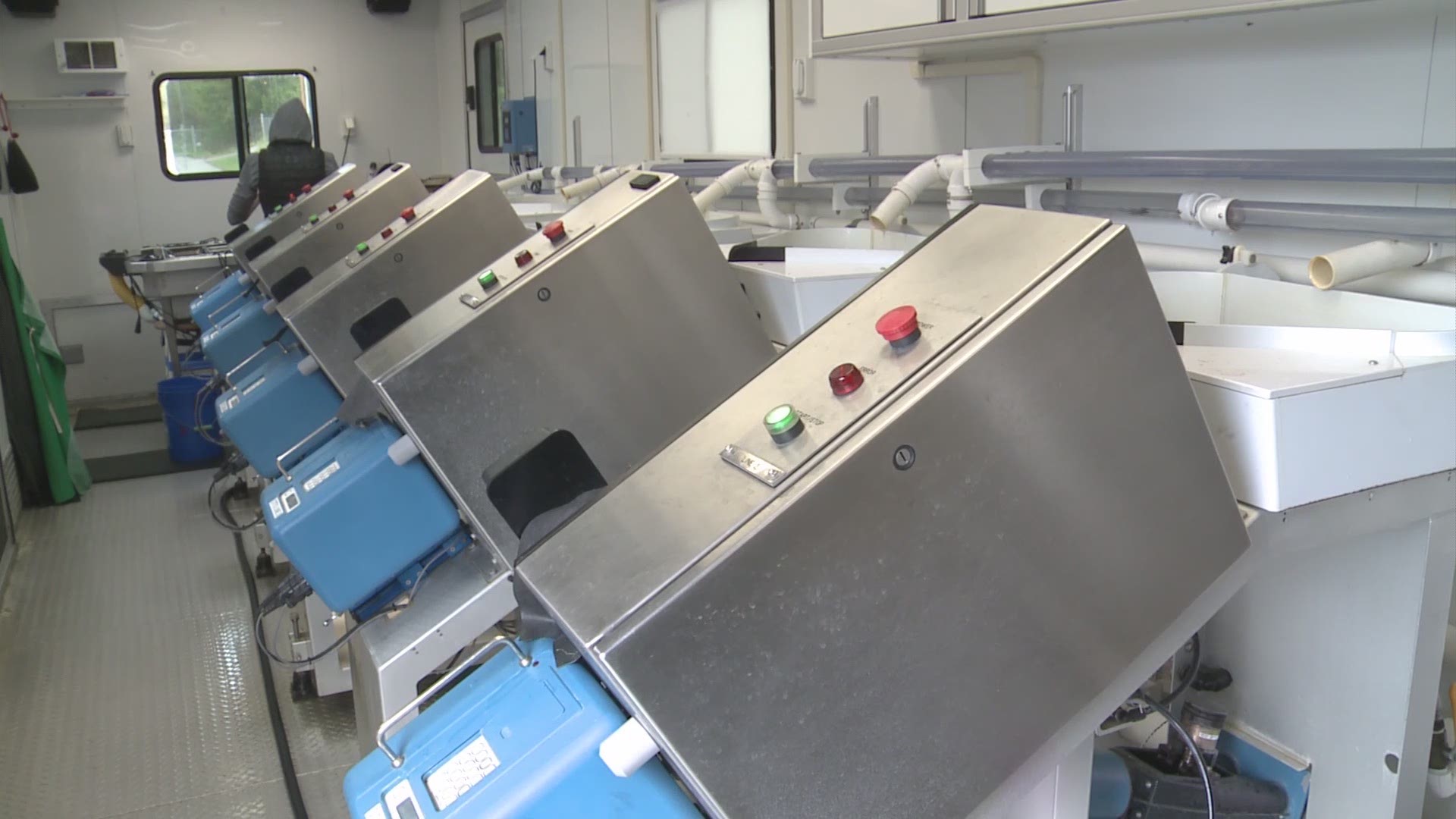TULALIP, Wash. — It may look like a water park amusement ride for salmon, but a mobile fish tagging unit on the Tulalip fish hatchery is the way young hatchery Chinook salmon are marked for identification when they return to Puget Sound as adults.
Their adipose fin is clipped and 200,000 of the Chinook salmon will also be injected with identification tags.
"Solving the salmon problem is the same as trying to solve the orca problem. It's all interwoven,” said Tulalip Salmon Hatchery Assistant Manager Jesse Rude. “It's not just one piece that’s going to fix this huge problem that we have.”
Rude and his colleagues are working to improve the health and survival of the fish they release. Instead of following standard protocol and releasing all the fish at once, they're now experimenting with three release dates by changing water temperatures and how much the salmon are fed.
"We got three different programs, early, normal, and late. The earliest will be released here in a couple of weeks. The normal group will be released in June. The late group will be released in August,” explained Tulalip Salmon Hatchery Assistant Manager Holly Reed. “So now the challenge is to get these fish up to the size for release.”
Governor Inslee included $12 million in his budget for increased hatchery fish production, hoping the extra juveniles will translate to 200,000 adult fish returning to Puget Sound.
"By the rate that they grow in the hatchery, and when they are released, that can affect how many come back and how big they are. They might stay in the ocean an extra year and come back as a larger adult, and that's what we are trying to come up with," said Tulalip Salmon Enhancement Scientist Michael Crewson.
Studies have shown hatchery fish can have a negative impact on wild fish if special precautions aren't taken.
"Making sure we are not just dumping fish into a system with a bunch of wild fish and they are both competing for food. Making sure that we are not out playing anything and if we are having an effect, what exactly are our effects and are they adverse effects or is the effect not creating any major issues for returns," explained Washington Department of Fish and Wildlife Wallace River Hatchery Manager Trevor Jenison.
Though pollution and noise are problems for the whales, their most immediate need is more food.
"The fish that come back are 80% hatchery fish, it's just the way it is. If we don't rear hatchery fish well and effectively, then we are not doing a service to the whales, to the fisherman, or anything,” said Michael Schmidt, deputy director of Long Live The Kings. “At the same time, we want to get to the point where we have wild fish coming back.”
Long Live The Kings is also studying why threatened fish like salmon and steelhead aren't making it out of Puget Sound and into the open ocean where they grow to adulthood. They've found a variety of issues, from a lack of forage fish for young salmon to eat, limited estuary habitat, contaminants, disease, competition with pink salmon, and predators like seals, sea lions, and birds. They've launched their program Survive The Sound so people can "adopt" a fish and track its journey through Puget Sound to see if it makes it to the ocean. It uses data from steelhead released in past years with acoustic transmitters that give a real map of where young steelhead and salmon are dying.
Between the Tulalip and Wallace River hatcheries, the state and the Tulalip tribe release 5 million Chinook salmon each year.
"Salmon are the lifeblood of Tulalip and that's who we are. It's very important to each and every tribal member out here because we are the people of the salmon," Rude said.
Join us on April 30 and May 8 from 7:30 – 8:30 p.m. for live expert panels discussing themes central to the livelihood of Southern Residents. Visit king5.com, our Facebook page or YouTube page to ask questions and make comments directly to those on the front lines of recovery. Click here to learn more about our “Saving the Orcas” series.

